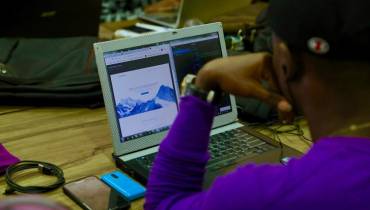How AI Is Helping Reduce Re-Incarceration Rates

Photo: Officer Bimbleberry / Wikipedia Common.
There are almost two million people in prison in the United States, with a further five million offenders being placed under community supervision. Those are huge numbers to handle.
The nature of corrections is also changing. This change is seen in the large number of people who are sent to prison and those that are placed under community supervision.
Today, the numbers are growing for both those cases leading to mass incarceration, and this is in turn raising new challenges for the prison system, families affected by the deleterious impact of the imprisonment of a family member, and the wider society at large.
Correction officers are put in charge of large numbers of people with high-risk cases. Initially, low-risk people were placed on probation. This has changed, necessitating for more high-risk people to always remain under the radar of supervision officers.
All of these changes (and more) have necessitated correctional policy makers, officers, and stakeholders to look at how technology can be leveraged to manage the ballooning numbers of inmates and emerging challenges in the sector.
In particular, authorities are exploring the various ways artificial intelligence (AI) can be used to lower cases of re-incarceration. For example, authorities are looking for ways to monitor those that have re-entered the outside world to help them avoid crime.
The role of technologies like AI has been instrumental in bringing about desired results in the prison and correctional system.
Key Ways AI Helps Reduce Re-Incarceration Rates

Here are some of the ways AI is helping reduce the rates of re-incarceration in prisons and correctional centers:
1. Gathering Prison Rosters
Prison rosters are tools developed to help inmates and their loved ones reconnect. Using these tools, a person is able to find out if their loved one has been incarcerated in a particular prison facility.
In addition, prison rosters are able to reveal the location where inmates currently are held.
Going through prison rosters is a manual process and consumes a lot of time. However, using AI, the entire process can be automated.
For example, if you are locating an offender in NC, an AI-powered inmate search tool can be used to gather prison rosters and find information about the offender quickly and conveniently.
This information will include all their details and will also let you know if the offender has been incarcerated more than once.
With such information, authorities can monitor the activities of offenders to help them avoid crime and reduce re-incarceration rates.
2. Real-Time Assessment of Offenders
The US has a very large number of offenders and holds a dubious distinction of leading the world in the imprisonment of its citizens. It gets quite difficult to keep tabs on each one of these offenders, given the limited number of supervisors available.
However, this has been made easier using artificial intelligence. AI is being used to provide real-time information about offenders and detect those with high levels of stress or anything that can lead them to crime. This is done using AI wearable devices.
With such information, officers are able to attend to such offenders, preventing them from committing crimes and harming themselves and other. This is helping in the reduction of re-incarceration rates.
3. Tracking of Offenders
Finally, the danger of a previous offender committing a crime can vary depending on different situations and can be very high when the risk is great. Authorities can use GPS systems to identify situations that might aggravate these offenders.
Using devices such as ankle bracelets, authorities are able to monitor previous offenders and the activities they are engaged in. Using AI, authorities can gather real-time information on how different locations are risky for offenders.
Apart from notifying the officers in charge, artificial intelligence can be used to intervene and help the offender keep away from crime. For instance, AI can encourage the offender to engage in other activities or even leave that particular location.
AI is not only powering digital transformation for businesses, but also making life easier for both previous offenders and authorities in the penal system. With AI, authorities can significantly reduce the rates of re-incarceration.




















